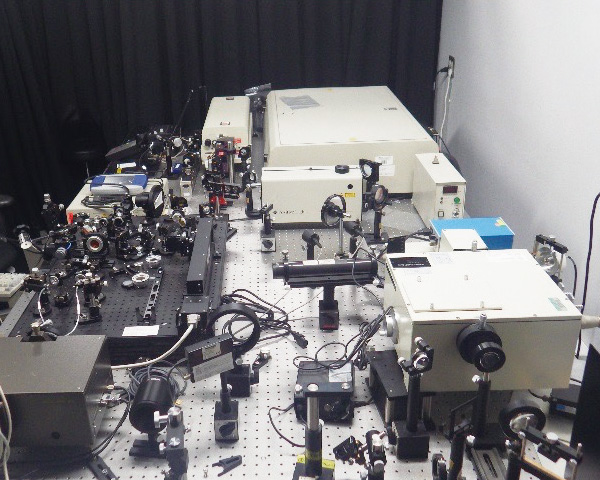- HOME
- Research
- Research Category
- Division of Global Security and Energy Transition (Next-generation photovoltaic devices) Kubo Laboratory
Division of Global Security and Energy Transition (Next-generation photovoltaic devices) Kubo Laboratory
Research and development of high-efficiency solar cells working under various light conditions
Among the various renewable energy sources, solar energy stands out as one of the most abundant and stable, making its effective utilization a critical factor in mitigating global warming and achieving a sustainable society. In particular, solar cells—which directly convert sunlight into electricity—are attracting growing attention, with strong demand for improved energy conversion efficiency, reduced production costs, and enhanced functionality such as lightweight and flexible form factors. Consequently, research and development targeting diverse applications is being actively pursued worldwide.
Our research is dedicated to the development of next-generation solar cells through the integration of chemical synthesis techniques for creating novel materials, device fabrication methods for optimal structural engineering, and advanced optical characterization techniques for performance evaluation. Specifically, we focus on materials and device architectures suitable for solution-processed solar cells, aiming to realize efficient, scalable, and low-cost photovoltaic devices.
In our materials research, we investigate solution-processable compound semiconductor nanocrystals and wide-bandgap semiconductor nanomaterials, with particular emphasis on morphological control and detailed analysis of their photoexcited-state properties. Of special interest are infrared-absorbing semiconductors, where precise control of crystal size enables quantum confinement effects that allow tunable light absorption across a wide spectral range—from infrared to visible. Leveraging these properties, we are developing innovative materials capable of efficiently converting a broad portion of the solar spectrum into electricity. In parallel, we conduct fundamental studies on the electronic structure and interfacial properties of hybrid materials composed of wide-bandgap semiconductors.
On the device level, we are exploring hybrid architectures and fabrication methods based on low-temperature wet processes to achieve high photovoltaic performance. Enhancing solar cell efficiency requires the seamless coordination of multiple fundamental processes, including light absorption, charge separation, carrier transport, and charge collection at the electrodes. To better understand and optimize these processes, we utilize modulation techniques involving optical and electrical stimuli, enabling deeper insights into device operation and guiding the rational design of high-performance materials and architectures for solar energy conversion.

Colloidal quantum dot solar cells

Optical properties of wide bandgap nanomaterials and solar cell application

Material research using ultra-fast laser pulses
We can feel that many phenomena, including life activities and natural occurrences on Earth, are supported by the blessings of sunlight. Many artists, including painters, are likely captivated by light. Similarly, the physicochemistry involving the interaction of light and matter is fascinating. Focusing on the dimensionality of materials can reveal interesting properties that are not observed in their bulk state. For example, graphite (3D), graphene (2D), and polyacetylene (1D) are all composed of carbon, but each exhibits distinctly different characteristics. Colloidal quantum dots are nanoparticles about a few nanometers in size, making them zero-dimensional materials. Their ability to control light absorption and.emission regions based on particle size has led to practical applications, and they are useful in a wide range of fields, including basic scientific research.
Here, we aim to enjoy the science involving the interaction of light and matter and the dimensionality of materials while also exploring the application of their unique functionalities in energy-related materials and devices.
Member

-
- Project Professor
Takaya KUBO
Research Area: Solar power generation, Ultra-high efficiency solar cells, Low-dimensional functional materials, Modulation spectroscopy - Project Professor
<As of October 2025>
Tags

